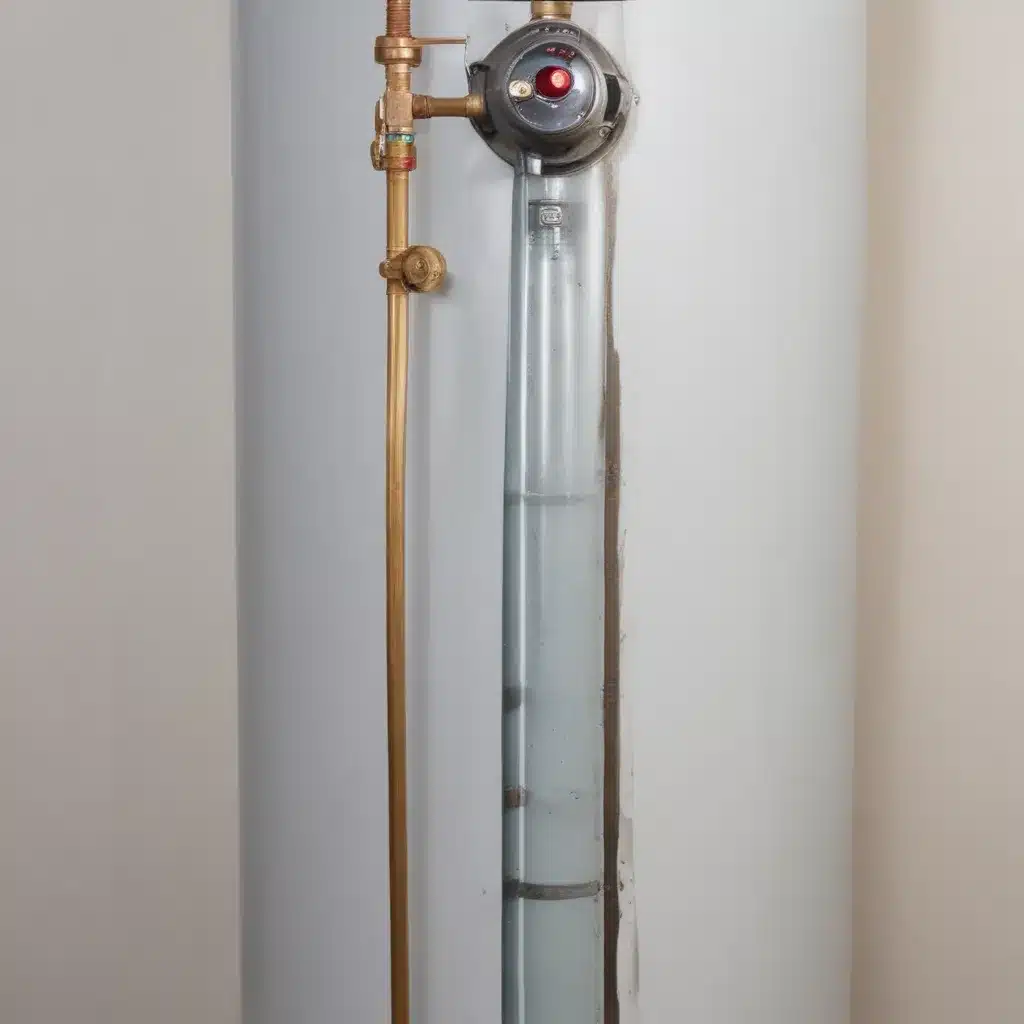
As an experienced water heater specialist, I’ve seen firsthand the importance of proper maintenance in keeping your home’s water heating system running smoothly and efficiently. One of the most critical yet often overlooked components is the anode rod – a crucial element in preventing corrosion and extending the lifespan of your water heater.
In this comprehensive guide, we’ll explore the vital role of the anode rod, step-by-step instructions for DIY replacement, and other essential maintenance tasks to help you prevent leaks and maximize the lifespan of your water heater.
The Importance of the Anode Rod
The anode rod is a key component within your water heater that acts as a sacrificial element, protecting the tank from corrosion. Submerged in the water, the anode rod is made of a metal, typically magnesium or aluminum, that is more reactive than the steel tank. As the anode rod gradually deteriorates over time, it attracts and neutralizes corrosive minerals like calcium, magnesium, and electrons, preventing them from attacking the tank.
Without a properly functioning anode rod, the steel tank becomes vulnerable to rust and eventually develops leaks, leading to water damage, mold growth, and the need for a costly water heater replacement. Regularly inspecting and replacing the anode rod is a simple yet highly effective way to extend the life of your water heater.
DIY Anode Rod Replacement
Replacing the anode rod is a straightforward DIY task that most homeowners can handle with a few basic tools. Here’s a step-by-step guide:
Shut Off the Power/Gas: double-check that the power to the water heater is turned off (either at the circuit breaker or by unplugging the unit). If you have a gas-fired water heater, turn off the gas supply as well.
Locate the Anode Rod: The anode rod is typically located at the top of the water heater tank, often covered by an access panel. Consult your owner’s manual or the manufacturer’s instructions to identify its exact location.
Disconnect the Anode Rod: Using a socket wrench or adjustable pliers, carefully unscrew the anode rod from the tank. It may be stuck, so you may need to apply some force to loosen it.
Inspect the Anode Rod: Examine the removed anode rod for signs of deterioration. If it’s less than half its original diameter or heavily coated in calcium deposits, it’s time for a replacement.
Install the New Anode Rod: Apply a small amount of thread sealant or Teflon tape to the threads of the new anode rod, then carefully screw it into the tank until it’s snug. Avoid overtightening.
Restore Power/Gas: Once the new anode rod is in place, turn the power or gas supply back on to the water heater.
Replacing the anode rod is a simple but essential task that can significantly extend the life of your water heater. As a general guideline, you should inspect the anode rod every 2-3 years and replace it as needed.
Additional Water Heater Maintenance Tasks
While the anode rod replacement is the primary focus, there are several other important maintenance tasks to keep your water heater in top shape:
Sediment Flushing
Over time, minerals and sediment can accumulate at the bottom of the water heater tank, reducing efficiency and potentially leading to overheating or strange noises. Flushing the tank annually can help remove this buildup and keep your water heater running smoothly.
Pressure Relief Valve Testing
The pressure relief valve is a critical safety feature that releases excess pressure, preventing the tank from exploding. Test this valve annually by lifting the lever and ensuring water flows out when released.
Thermostat Adjustment
Keeping your water heater’s thermostat set to the recommended temperature of 120°F (49°C) can improve energy efficiency and prevent scalding. Regularly check and adjust the thermostat as needed.
Insulation Upgrades
Wrapping your water heater tank and hot water pipes with insulation can significantly reduce heat loss, improving energy efficiency and lowering utility bills.
By incorporating these maintenance tasks into your routine, in addition to regular anode rod replacement, you can help prevent leaks, extend the lifespan of your water heater, and enjoy a reliable, energy-efficient hot water supply for years to come.
Recognizing When to Hire a Professional
While many water heater maintenance tasks can be handled as DIY projects, there are certain situations where it’s best to call in a licensed and experienced plumber:
- Gas Leaks: If you suspect a gas leak, immediately turn off the gas supply and contact a professional. Gas leaks are hazardous and should be addressed by trained technicians.
- Electrical Issues: Problems like frequent circuit breaker tripping or faulty wiring require the expertise of a qualified electrician.
- Complex Repairs: If you’re dealing with persistent issues or are unsure about the root cause of a problem, it’s wise to have a professional plumber diagnose and repair the issue.
By knowing when to call for professional assistance, you can double-check that your water heater remains in top condition and avoid potential safety hazards or costly mistakes.
Conclusion
Maintaining your water heater’s anode rod is a crucial step in preventing leaks, extending its lifespan, and maximizing the efficiency of your home’s hot water system. With a few simple DIY steps and a commitment to regular maintenance, you can keep your water heater running smoothly for years to come.
Remember, if you ever need expert assistance or are considering upgrading to a more energy-efficient water heater model, the team at Water Heater Pick is here to help. Our experienced technicians can provide reliable maintenance, repairs, and installations to meet all your water heating needs.
Tip: Flush your water heater tank at least once per year

